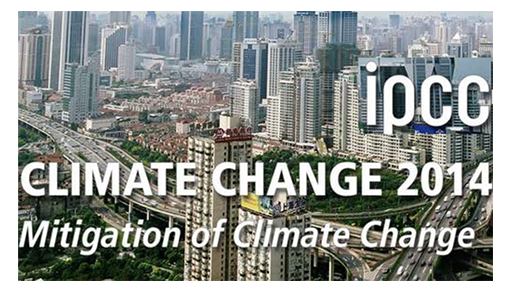
#CLIMA2014/
Mitigation of Climate Change:
Tools, policies and measures to cut greenhouse emissions
IPCC – Working group III
FIFTH ASSESSMENT REPORT ON CLIMATE CHANGE
This is the official IPCC Press Release on WGIII – AR5
IPCC Press Release
IPCC: Greenhouse gas emissions accelerate despite reduction efforts
Many pathways to substantial emissions reductions are available
BERLIN, 13 April – A new report by the Intergovernmental Panel on Climate Change (IPCC) shows that global emissions of greenhouse gases have risen to unprecedented levels despite a growing number of policies to reduce climate change. Emissions grew more quickly between 2000 and 2010 than in each of the three previous decades.
According to the Working Group III contribution to the IPCC’s Fifth Assessment Report, it would be possible, using a wide array of technological measures and changes in behaviour, to limit the increase in global mean temperature to two degrees Celsius above pre-industrial levels. However, only major institutional and technological change will give a better than even chance that global warming will not exceed this threshold.
The report, entitled Climate Change 2014: Mitigation of Climate Change, is the third of three Working Group reports, which, along with a Synthesis Report due in October 2014, constitute the IPCC’s Fifth Assessment Report on climate change. Working Group III is led by three Co-Chairs: Ottmar Edenhofer from Germany, Ramón Pichs-Madruga from Cuba, and Youba Sokona from Mali.
“Climate policies in line with the two degrees Celsius goal need to aim for substantial emission reductions,” Edenhofer said. “There is a clear message from science: To avoid dangerous interference with the climate system, we need to move away from business as usual.”
Scenarios show that to have a likely chance of limiting the increase in global mean temperature to two degrees Celsius, means lowering global greenhouse gas emissions by 40 to 70 percent compared with 2010 by mid-century, and to near-zero by the end of this century. Ambitious mitigation may even require removing carbon dioxide from the atmosphere.
Scientific literature confirms that even less ambitious temperature goals would still require similar emissions reductions.
For the report, about 1200 scenarios from scientific literature have been analyzed. These scenarios were generated by 31 modelling teams around the world to explore the economic, technological and institutional prerequisites and implications of mitigation pathways with different degrees of ambition.
“Many different pathways lead to a future within the boundaries set by the two degrees Celsius goal,” Edenhofer said. “All of these require substantial investments. Avoiding further delays in mitigation and making use of a broad variety of technologies can limit the associated costs.”
Estimates of the economic costs of mitigation vary widely. In business-as-usual scenarios, consumption grows by 1.6 to 3 percent per year. Ambitious mitigation would reduce this growth by around 0.06 percentage points a year. However, the underlying estimates do not take into account economic benefits of reduced climate change.
VIDEO/ Everything you need to know about the IPCC Fifth Assessment Report – WG3: Mitigation of Climate Change
The video is in Italian only.


